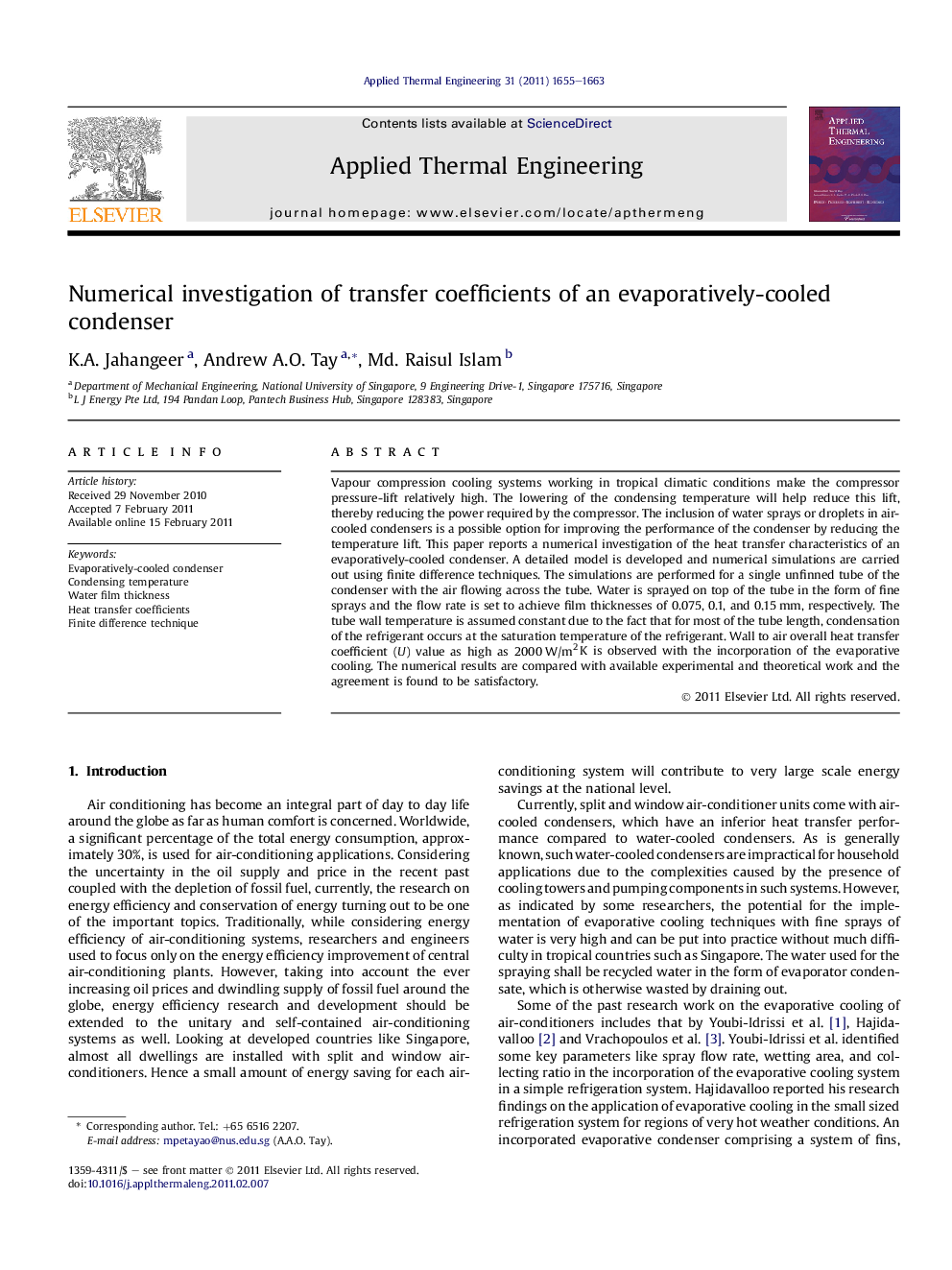| کد مقاله | کد نشریه | سال انتشار | مقاله انگلیسی | نسخه تمام متن |
|---|---|---|---|---|
| 648001 | 884608 | 2011 | 9 صفحه PDF | دانلود رایگان |

Vapour compression cooling systems working in tropical climatic conditions make the compressor pressure-lift relatively high. The lowering of the condensing temperature will help reduce this lift, thereby reducing the power required by the compressor. The inclusion of water sprays or droplets in air-cooled condensers is a possible option for improving the performance of the condenser by reducing the temperature lift. This paper reports a numerical investigation of the heat transfer characteristics of an evaporatively-cooled condenser. A detailed model is developed and numerical simulations are carried out using finite difference techniques. The simulations are performed for a single unfinned tube of the condenser with the air flowing across the tube. Water is sprayed on top of the tube in the form of fine sprays and the flow rate is set to achieve film thicknesses of 0.075, 0.1, and 0.15 mm, respectively. The tube wall temperature is assumed constant due to the fact that for most of the tube length, condensation of the refrigerant occurs at the saturation temperature of the refrigerant. Wall to air overall heat transfer coefficient (U) value as high as 2000 W/m2 K is observed with the incorporation of the evaporative cooling. The numerical results are compared with available experimental and theoretical work and the agreement is found to be satisfactory.
Highlights
► We numerically investigated an evaporatively-cooled condenser.
► The heat transfer coefficients are determined from the temperature distribution output.
► Higher the heat transfer coefficients, better the condenser performance.
► Better condenser performance translates into improved COP of the system.
► Overall heat transfer coefficient (U) value as high as 2000 W/m2 K is observed.
Journal: Applied Thermal Engineering - Volume 31, Issue 10, July 2011, Pages 1655–1663